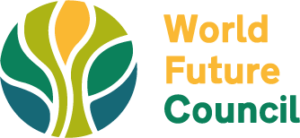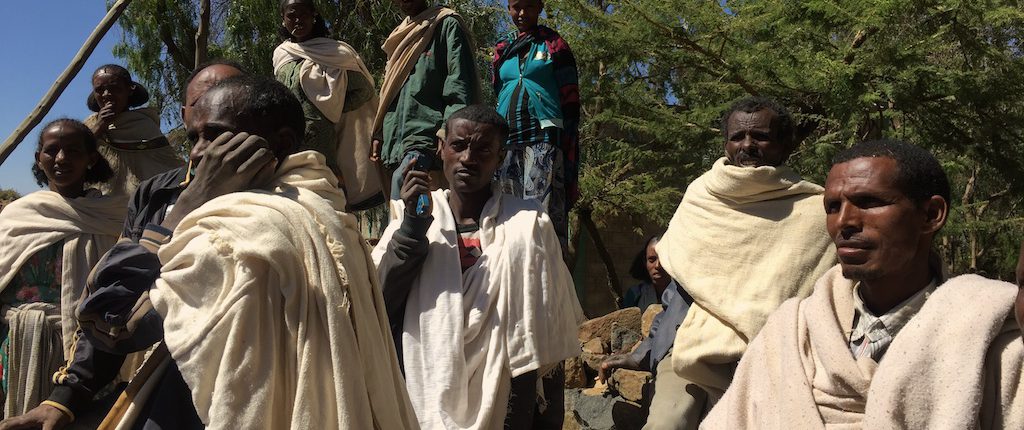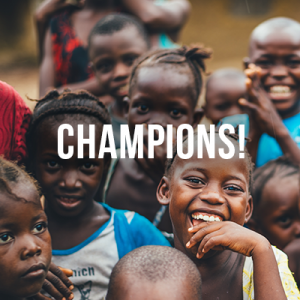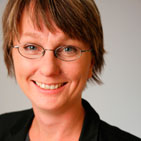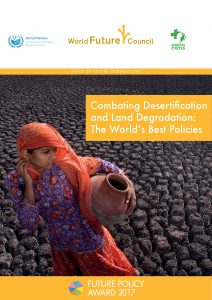How to mobilise the masses: Watershed Management in Tigray
by Ina Neuberger Wilkie
Travelling through Tigray, northern Ethiopia is a mind blowing experience for anyone with an eye for land management. Hill after hill after hill is terraced. Stones are piled up in long benches to stop water flowing off. All of this back breaking work has been done by local communities over the past 30 years. People are claiming they moved more stones than it took to build the pyramids.
Tigray’s Mass Mobilization Campaigns are considered a rather “unique collective action strategy”. People are expected to contribute at least 20 days per year of voluntary labour towards building public infrastructure or managing of watersheds. The work is not paid. Nevertheless, this voluntary work has been provided for the past three decades by 30 to 40 per cent of the population. Even more astonishing is that in many regions there are actually two campaigns of voluntary work per year – 20 days of soil and water works in February and 20 days of plantation in August.
What does it take to motivate such participation?
A shared experience of threat, hope and struggle
Tigray’s highlands are densely populated and in the past people have caused severe land degradation. Smallholder farmers strived to increase food production by using unsuitable techniques and expanding cultivation to marginal land. Grazing and harvesting wood for household fuel contributed to the destruction of vegetation on steep slopes. Soil fertility was depleted, resulting in a decline in agricultural productivity. Land resources were pushed to their limits and when this fragile balance was disrupted, catastrophes such as the 1984 famine occurred. Estimates are that the famine affected eight million people, leaving one million dead.
This Post is part of our “African Champions” series – we present policy solutions for Africa, made in Africa.
This event was disruptive, convincing a majority of the surviving people that only if they fundamentally changed the way they lived would there be a chance of survival on the land.
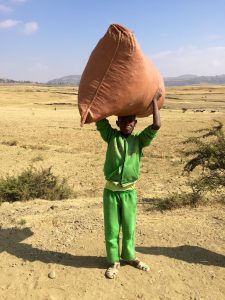
A heavy burden: land degradation threatens livelihoods of millions of people.
The famine triggered the start of the downfall of the Derg, the military government that ruled Ethiopia from 1974 to 1987. The struggle against the Derg led to a strong organization of the people of Tigray. Already in times of conflict and uprising, the opposition movements promoted sustainable land management. The struggle in Tigray was intertwined with the hope for building livelihoods and with a vision of a land that can provide if restored and managed sustainably.
This strong link between a disruptive event, natural resource management as a vision in the struggle and a government which grows out of this movement is probably unique to Tigray. However, experience of natural or other disasters is often the trigger for opposition and liberation struggles. The lesson from Tigray would be that developing a vision and a plan for natural resource management should not come after the struggle, but with it.
Civic participation in government policy on land management, or even mass mobilisation as in the case of Tigray, grows strongest out of a shared experience of threat, combined with a shared vision, backed by a shared struggle. As it is, this insight is not really suitable for advocacy. It would suggest waiting for a disaster. How else could a shared vision of restoring land be created, a vision that is strong enough to motivate people to go out and do the work?
Tangible benefits are crucial
A challenge of restoration or re-forestation programmes is the time horizon. It can take a few years before you see benefits, harvest more, and make extra profit. Therefore it is a challenge to build trust for new techniques, in new people – and, as we are talking policy, build trust in the government.
Basically, there is no other way than to get started. People will see the benefits of their own work.
Managed watersheds will ultimately do what their name implies. Shed water.
Today, farmers in Tigray will tell you that working on the hills once or twice a year for 20 days has become part of the culture. It is what you do. The back breaking work together must be a struggle in itself, must be creating a shared culture.
Often underestimated: the implementation framework
Labour input does not have to be entirely “voluntary” in the sense that it doesn’t get paid at all. In Tigray, mass mobilisation was supported by a range of internationally funded programmes, including the FAO “Managing Environmental Resources to Enable Transition” (MERET) project, the multi-donor funded Productive Safety Net Programme, and the Sustainable Land Management Programme. Employment generation schemes are one mechanism of these programmes; local people receive cash or food for their work. Such programmes have for example financed the construction of micro-dams and other water harvesting activities such as trenches, terraces, and stone benches.
In the Hagereselam community in the dry south east of Tigray a massive gully has been rehabilitated. A 12 metre deep canyon used to divide the land. Farmers were struggling to reach their fields; animals broke their legs and necks and died on the steep slopes.
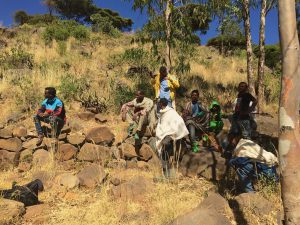
In over 30 years of manual labour, the locals restored land on a large scale.
The land is being healed. Today, a bright green scar criss-crosses through the fields. Rehabilitation started in 2011 and, as you do with watershed management, work started at the top. Hillside terraces were constructed for youth groups to plant draught resistant high value crops. 5 metre deep gabions were sunk into the gully and anchored into its sides. Two rainy seasons after gabion construction, planting started. Plants like Sambuca, a bamboo, and Sesbania sesban, a river hemp, hold the soil and provide biomass.
The healing of the Hagereselam gully is the result of interplay of 3 actors – the government, the community, and a donor funded programme. 6 years of free voluntary labour went into the restoration of this gully, plus work funded through the safety net programme, plus work funded through donor programme incentives.
“We have to work through the system,” explains Berhane Hailu of Helvetas, the Swiss development organisation which initiated and conducted the project. Government regulations focus donor programmes on natural resource management. Government also provides criteria for the selection of intervention areas: Where is urgent intervention needed, is the community willing to contribute?
Projects start with the involvement of government experts at district (Woreda) level, then with the community. Out of discussion comes planning. The government provides technical work norms and regulations. At the end of the process a project agreement is signed which determines what will be done and who will contribute.
The Tigray model shows that government can lead and facilitate the land management process. It can create a favourable environment for significant investments from donors and programmes and still be in control. What is needed is an intervention framework that facilitates rather than inhibits – rules, standards, work norms for community involvement. This “technical stuff” makes up an implementation framework which is crucial, but often underestimated. Of course, you also need to set the direction through policy. Again, Tigray is a good example.
Can we do more than “just sustain”? Desertification puts millions of people at risk of being displaced. But there is hope: 2 billion hectares of degraded land could be restored world wide.
Policy with a clear direction
The development strategy of the Ethiopian Government is called “Agricultural Development-Led Industrialization”, short ADLI. Professor Mitiku Haile, founder of the University of Mekelle explains that “ADLI is a strategy in which agriculture and industry are brought into a single framework of development. The development of agriculture is viewed as an important vehicle for industrialization by providing raw material, a market base, surplus labour and capital accumulation”.
Agriculture is seen as the county’s growth engine. So far, the smallholder farmer is at the core of this strategy. Micro- and small-scale enterprises are encouraged, market access is promoted, credit services developed and training for farmers undertaken.
Working with what we have: land and labour
The focus of ADLI is not the same in all states. Tigray has added “conservation-based” to its Agricultural Development-Led Industrialization. It is the objective of Tigray’s ADLI to intertwine environment, people, and economy. To reach this objective, the government has taken a very pragmatic stance. As Kiflum Abadi, Director National Resource Management (NRM) of the government of Tigray puts it: “There are three factors in development: capital, land, labour. We work with what we have: land and labour.”
Kiflum Abadi’s Directorate is at State level. It works on the design of interventions, on implementation, management of protected areas and runs a seed centre. The state of Tigray is divided in 34 districts and every one of these Woredas has a Director and a number of teams working on NRM. Politically the lowest level of administration is a Kebele. A Kebele covers between 500 and 900 households (ca 6,000 to 10,000 people) and is governed by a committee elected by the local community. Every Kebele in Tigray has a NRM expert who works and lives with the local community.
The Tigray Bureau of Agriculture also deploys extension officers who have been trained in agriculture and livestock management respectively. Every Kebele therefore has a team of at least three dedicated extension officers. They connect with local people, offer advice, train farmers and bring in up-to-date knowledge. Studies show that the role of development agents is pivotal in implementing programs.
During communal work, they support the group leaders in organizing people and tasks. Two to three weeks before the intervention period, communities discuss which areas will be worked on, what projects will be implemented and who will do it. People form development groups for discussion and decision making which involve 30 households and they organize in working groups. During the intervention period, the groups work on their assigned tasks; activities are assessed daily and improvements undertaken if necessary. At the end of the intervention, in a series of meetings, the work is evaluated and lessons learned discussed.
Devolution of power to district level
The Tigray model thus has a strong outreach component with knowledge and information travelling both from the centre to the village and back. Currently measures are underway to create centres of creation within these pathways. The objective is to make the Woredas the centre of socio-economic development. This also includes budget responsibility. The program covers smallholder agriculture, the private sector, and the public sector, including the judiciary. Training of farmers, supporting micro-financing institutions, and strengthening public and private sector organizations involved in the development of agriculture will be the main activities concerning smallholder agriculture.
Leadership of a small group of people
A technical implementation framework, a policy with a clear direction and a lively outreach system make up the backbone of the Tigray model. However, travelling through Tigray one cannot help but notice another, softer success factor. The leading people in community, civil society, government, academics are all connected through a web of knowledge and trust. What strikes is the permeability of the system with people moving positions across science, politics, civil society and donor organisations.
Impressive is also the knowledge available – you will have a hard time finding someone in a leadership position in Tigray who does not at least have a PHD in sustainable land management. This group of people interacts on official platforms, such as OFARD, a committee that brings together government with international donors and local NGOs. But they also know and trust each other and communicate. The Minister is only a phone call away from the scientist. “What you need is diversity and friction”, says Hailu Araya, thereby probably explaining the core of good group leadership and the crucial “soft” success factor of the Tigray model.
THE POLICY
Read up on all this and other policies in our full brochure, which is also available in French.
